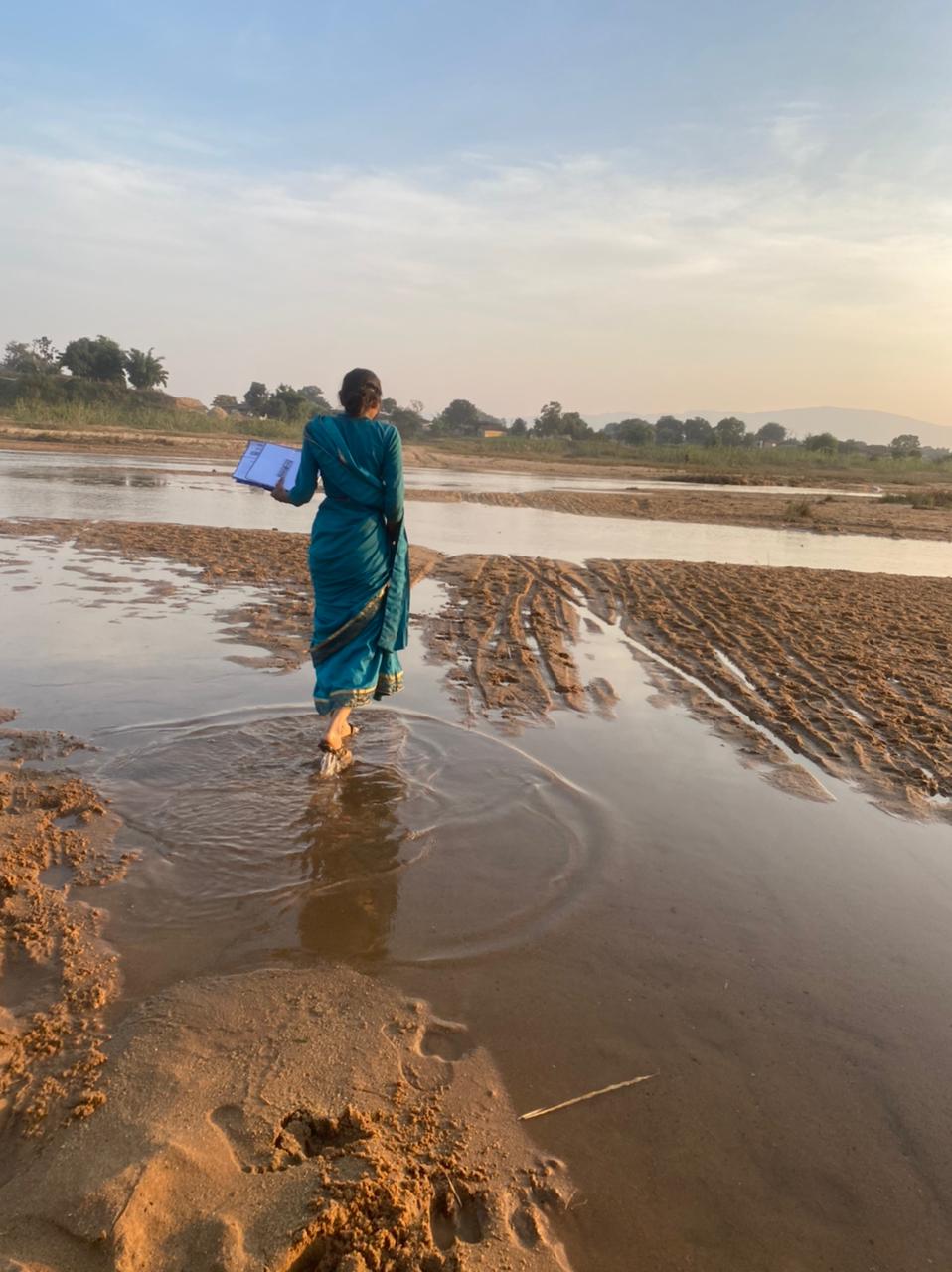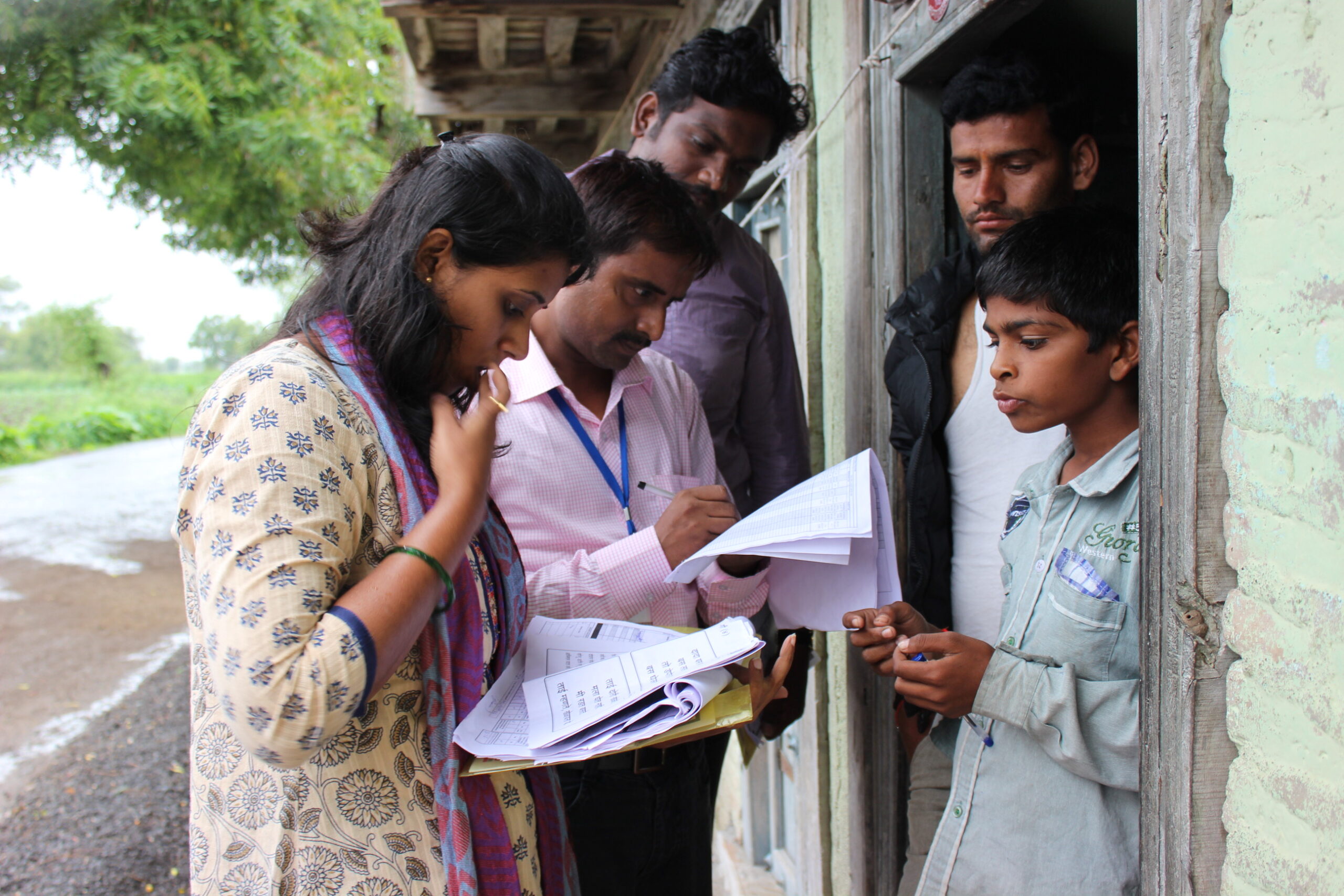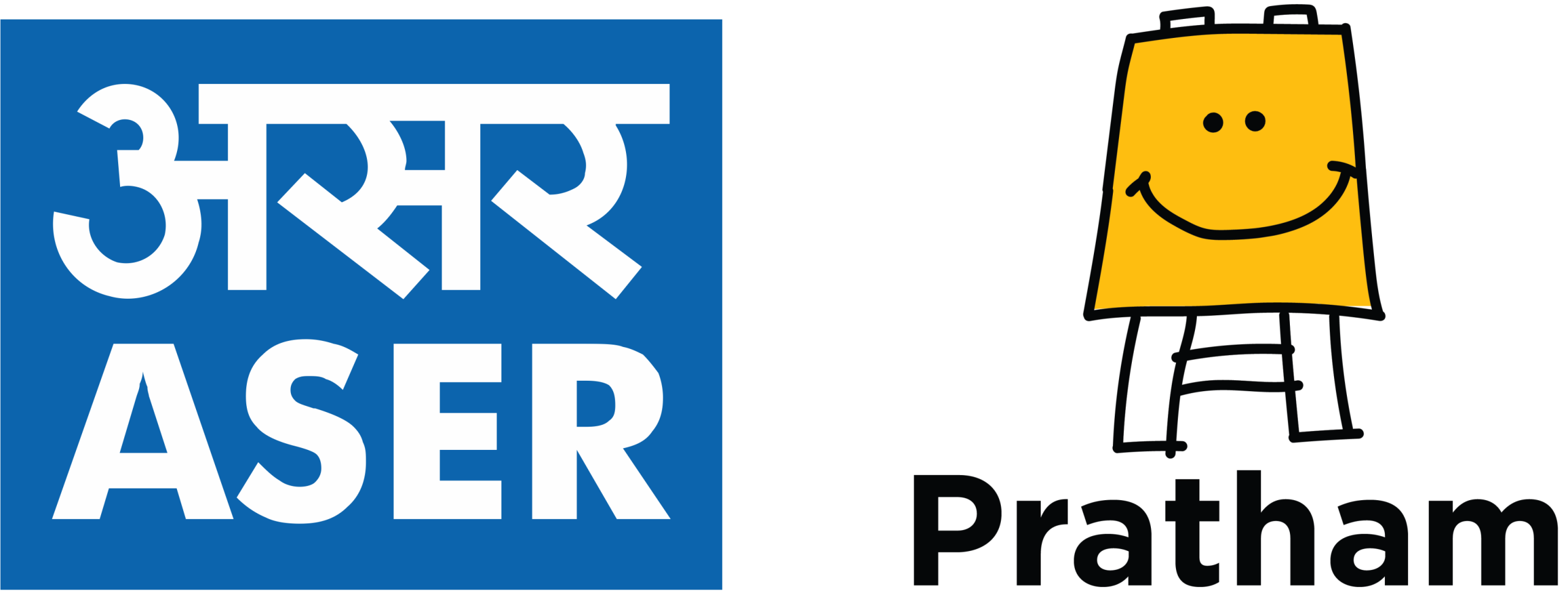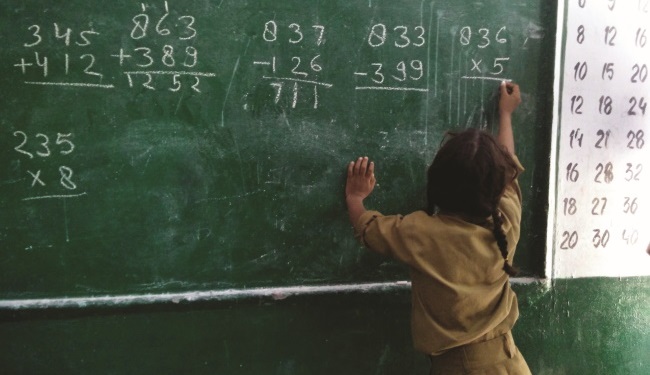Sampling
In each district, 30 villages are sampled from the most recent Census village directory using Probability Proportional to Size (PPS), a sampling technique that is commonly used for large scale surveys. 20 households are randomly sampled in each village. This generates a total of 600 sampled households in each rural district or about 3,00,000 households at the national level.
The sample design employs a rotating panel of villages. Each year, 10 villages from three years ago are dropped and 10 new villages are added. For example, in ASER 2010, 10 villages from ASER 2007 were dropped, 10 villages from 2008 and 2009 were retained and 10 new villages from the census village directory of 2001 were added. This strategy generates a representative picture of each district.


Survey process
Before beginning the survey in a village, the surveyors meet the Sarpanch to explain the purpose of ASER and seek support to conduct the survey. They then visit a government primary school. Here, they meet the headmaster and collect basic school information.
Next, the surveyors walk around the entire village and make a village map. They also record basic information on village infrastructure such as roads, banks, health centres, etc. After understanding the village layout, surveyors divide the village into sections. A total of 20 households are surveyed in every village. To select these households, the survey team begins the survey from the centre of the hamlet and then selects every 5th household found on the left. This is known as the “5th household rule”.
From each sampled village 20 households are surveyed. In each sampled household, they record basic household information as well as information of children aged 3 to 16 years. The ASER testing tools are used to assess foundational skills of children aged 5 to 16 years.
Tools and testing
View/download the ASER tool in the following languages:
Quality control measures




